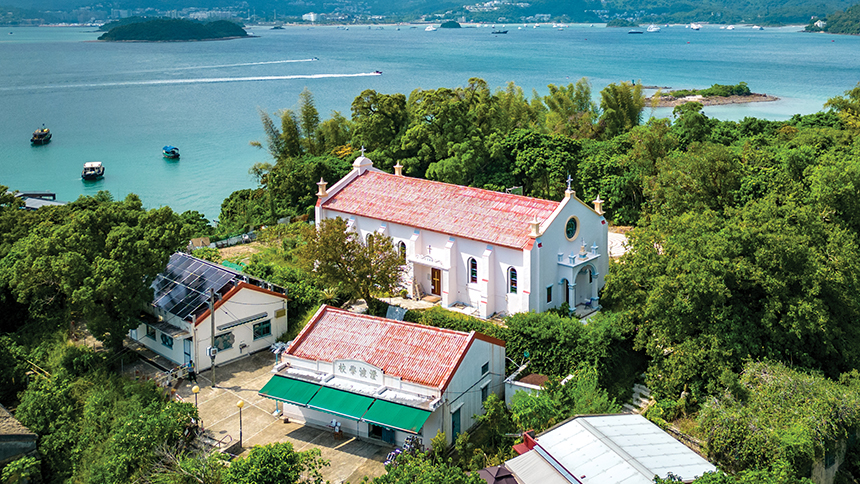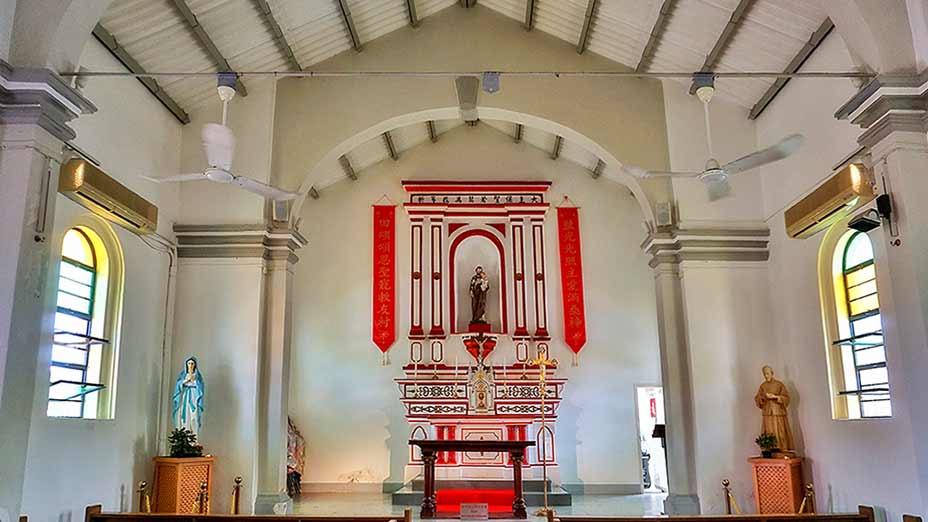朝聖欄
聖堂開放時間: 上午 10 時至下午 4 時(聖堂在星期一不對外開放)
禧年2025 期間的特別聖堂活動安排:
*彌撒活動*:每月第一個星期日下午 2 點 30 分 –
*彌撒活動* 後會安排進行歷史介紹及導賞活動。
團體朝聖聯絡方式: 電話:2792 2967
電郵:sacredheartchurch6@gmail.com
備註: 朝聖者須自行安排交通工具,包括在這段時間的街道,詳情可參考以下網站: www.yimtinssai.com
Brief
Being a small island of
less than 1 km square
and located 3 km away
from Sai Kung, Yim Tin
Tsai (YTT) was home
of the Chan family of
Hakka origin. The Chan
clan settled down in this
village about 150 years
ago. In the early days,
residents were mostly
engaged in salt drying
and farming.
The history of St.
Joseph’s Chapel is
closely related to the
development of YTT
and the Chan’s Village.
Italian missionaries came
around 1860 to preach
Christianity. In 1864, the
PIME priests, particularly
Fr. S Volonteri and Fr.
G Origo came along and started their evangelization and pasturing services
amongst the locals. In 1866, 7 villagers were baptized in autumn by Fr. G
Origo, while 33 members of the Chan family were baptized in Christmas
by Fr. S Volonteri. Local Catholics donated a vacant site for construction
of a chapel and school, dedicated to St. Joseph as their patron. In 1875, the
villagers on the entire island were baptized. St. Joseph’s Chapel at YTT was
inaugurated and blessed in 1890.
By 1990’s there is no resident in YTT as
all villagers have left elsewhere to make
their living. However, the village has not
been forgotten. All the locals will still
come back in May every year for a big gettogether to celebrate the feast day of St
Joseph to share their spiritual bondage.
A number of notable clergies being
nurtured in this village throughout the
years, notably Rev. Joachim Chan (1890-
1975) ordained in 1917, VG Dominic Chan ordained in 1979, and five other
sisters of Sisters of St. Paul de Chartres and Sisters of the Precious Blood.
The church, village and relics of salt pans together still remain to be the
main cultural heritage of the island.
St Joseph’s Chapel is a living example of a religious centre and a local
landmark. It also symbolizes the effort and dedication of early day
missionaries. In the past 120 years, the village has witnessed the salvation
of many deserted sheep which still has a great impact until now. The village
also integrates religious, historical, ecological and cultural dimensions of
human development so that it forms a platform for further improvement and
enhancement.





